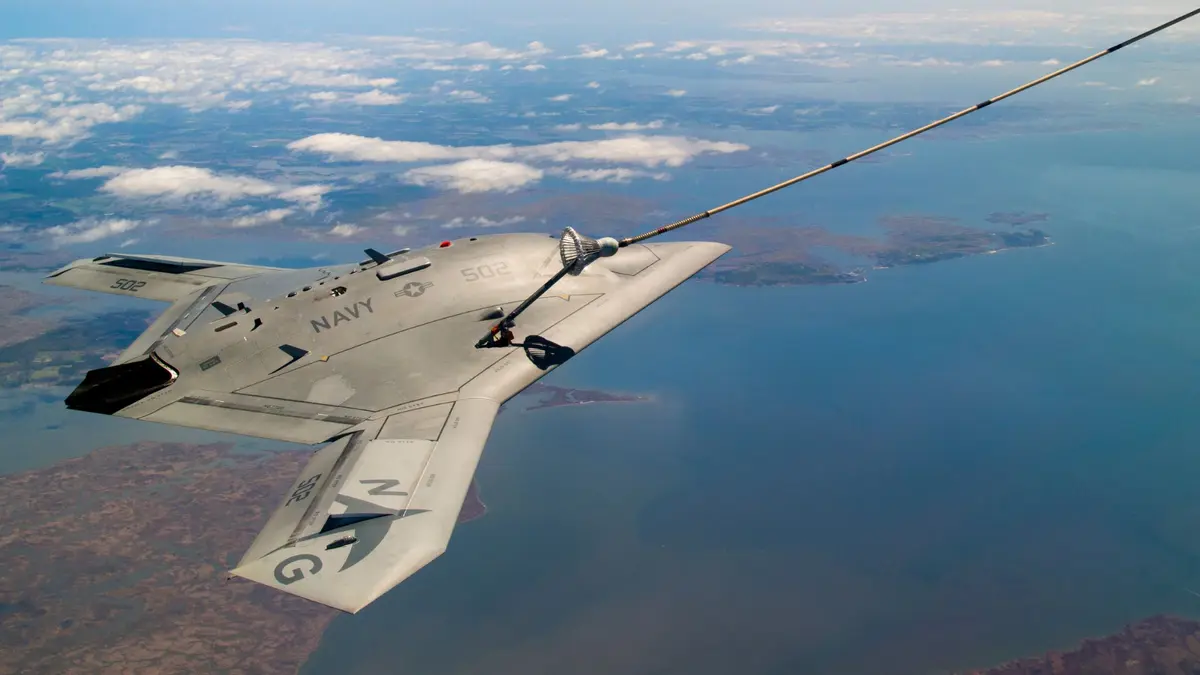✈️ Northrop Grumman X-47B — Review
🧩 Overview
The X-47B is an experimental unmanned combat air vehicle (UCAV) developed by Northrop Grumman for the U.S. Navy. First flown in 2011, it became the first drone to autonomously launch, fly, and land on an aircraft carrier — a milestone for naval aviation and autonomous flight.
Designed to test stealth, carrier operations, and autonomous decision-making, the X-47B paved the way for future combat-capable drones and loyal wingman systems in high-threat environments.
⚙️ Specifications
-
First flight: February 4, 2011
-
Status: Retired (test program completed)
-
Crew: None (fully autonomous)
-
Wingspan: 62.1 ft (18.9 m)
-
Length: 38.2 ft (11.6 m)
-
Range: Over 2,100 nautical miles (~3,900 km)
-
Ceiling: Over 40,000 ft (12,000 m)
-
Max speed: High subsonic (~Mach 0.9)
-
Engines: 1 × Pratt & Whitney F100-PW-220U turbofan
-
Payload: 2 internal bays (up to 4,500 lb / 2,000 kg) — could carry bombs or sensors
🛠 Design Features
-
Flying wing design: Similar to the B-2 Spirit, maximizing stealth
-
Carrier-capable: Foldable wings, tailhook, and reinforced landing gear
-
Autonomous operation: Could handle taxiing, takeoff, refueling, landing — all without direct pilot input
-
Internal payload bays: Maintains stealth while carrying weapons or sensors
-
Aerial refueling: Demonstrated fully autonomous mid-air refueling in 2015
✅ Strengths
-
✅ Stealthy profile for contested airspace
-
✅ Full carrier integration (launch, recovery, and storage)
-
✅ High range and endurance for ISR and strike roles
-
✅ Autonomous flight and refueling capabilities
-
✅ Major tech demonstrator that influenced future UAVs
⚠️ Weaknesses / Limitations
-
❌ Unarmed in tests: Though capable of carrying weapons, it never did operationally
-
❌ No full production: Program concluded as a tech demo, not a deployed system
-
❌ Subsonic only: Lacked high-speed penetration capability
-
❌ Limited versatility compared to manned aircraft
🏁 Final Verdict
| Category | Rating (★ out of 5) |
|---|---|
| Stealth | ★★★★☆ |
| Innovation | ★★★★★ |
| Autonomy | ★★★★★ |
| Combat Readiness | ★★☆☆☆ |
| Legacy | ★★★★☆ |
| Cool Factor | ★★★★☆ |
🔚 Final Thoughts
The X-47B was a bold proof-of-concept: a stealth drone that could launch and land from aircraft carriers — without a pilot. While it didn’t go into service, it proved that the Navy could field unmanned aircraft alongside manned jets.
Its success influenced follow-on programs like:
-
MQ-25 Stingray (aerial refueling drone)
-
Future UCAVs for surveillance and strike
-
Development paths for Loyal Wingman drones and Next-Gen Air Dominance (NGAD) systems

Comments are closed